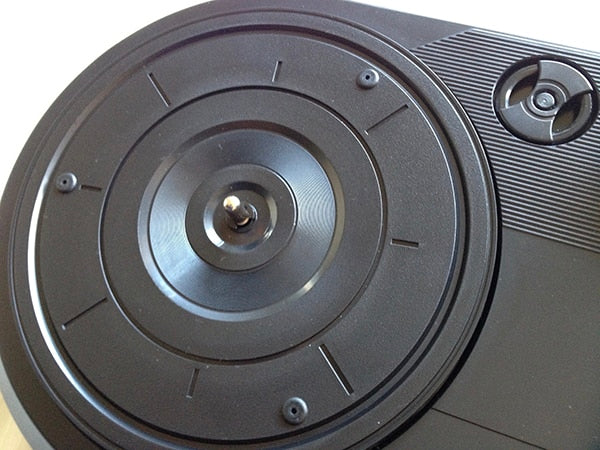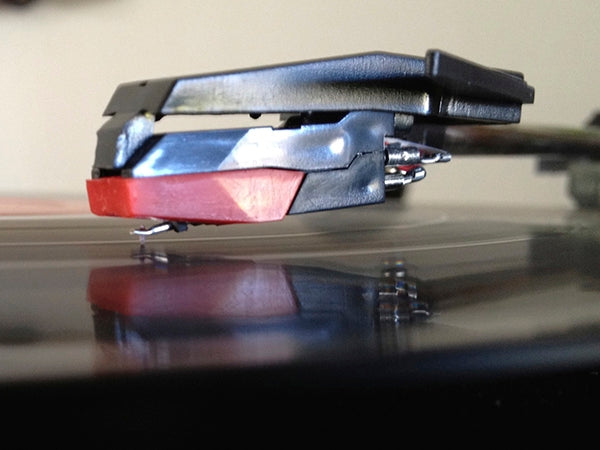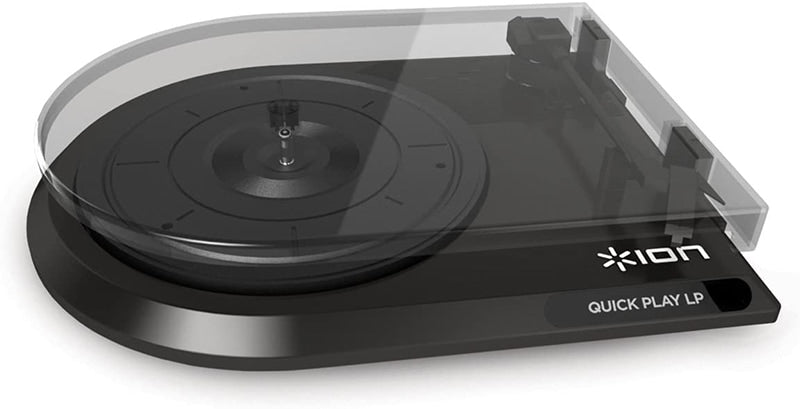This is the first in a series of semi-serious reviews – unabashedly replete with unsubstantiated speculations, hyperbole, unverified assumptions, conjectures and barely logical conclusions.
But first, a story:
In the summer of my 14th year, I discovered rock and roll…and was crazed.
This was 1974 and the world was experiencing a musical crescendo like no other, with a dizzying abundance of bands at their creative peak. Naturally, for a crazed kid, I took every opportunity I could find to satisfy my new and visceral need to listen (loudly) – especially at those rare times when I was alone at home and didn’t have to hear “turn that down…now!” To counter the limitations, I developed a middle-of-the-night-don’t-wake-the-parents strategy, which consisted of quietly tiptoeing into the den downstairs and turning on just the turntable without the receiver, and putting on my favorite album at the time, Bad Company, amplified only by the stylus in the groove, with my ear inches above the headshell. Sure, it sounded like the band members were performing on electric kazoos, but, hey, it was music, and I for one felt very smart and sneaky having my very own version of a modern-day Victrola.
Fast forward a few decades: I was waiting to check out at Bed Bath & Beyond with a cart full of household items when my eyes landed on a display of turntables on sale at a post-Christmas price. I immediately left my place in line and, formulating my questions, searched for the audio department manager – only to find that they didn’t have one, at least at that location. Nonplussed, I grabbed a box off the stack and added it to my booty of household necessities.
Description
As I unpacked Ion’s diminutive turntable, the unassuming Quick Play LP, it was clear that much creative engineering went into the crafting of this unique, potentially game-changing component. I had never seen anything quite like it.
Along with the pre-mounted tone arm and cartridge and the handy USB port for ripping vinyl to digital files, the most obvious and initially confusing attributes of the Quick Play LP are its size and weight. Bucking convention, the engineers chose none of the proven methodologies to isolate their ‘table from bad vibes – No 2 Hz-tuned suspension; no dense, massive platter; or even any of the variations of sonic-sandwich plinths that dampen spurious vibrations by converting them to heat. They did, however, take the lead in what I speculate will become another viable direction for turntable designers: for lack of a name, let’s call it the Molded Polymer Unibody.

A triumph of minimalist engineering.
The platter, seemingly made of this same material, is a triumph of minimalist engineering. It sports three rubber-like grip buttons that hold the LP in place and, if my intuition serves me, drains vibrations from the vinyl into some proprietary black hole below the plinth.
Another innovation – which does away with the need for a record clamp – is the ingenuous integrated dust cover that absorbs vibrations while playing a record. How? When the dust cover is lowered, it rests its weight on the spindle, soaking up any sonic gunk from the belt drive mechanism below!
The 3-speed semi-automatic turntable features a 45 rpm adapter which is nicely embedded into the deck for those times you come home from a long day of trawling garage sales with a victorious armful of 7-inch singles by The Archies, Tommy James and The Shondells and (dare we dream?) Three Dog Night…you know who you are.
The Quick Play’s unique tonearm design with its integrated head-shell defies easy classification. Its construction doesn’t seem to follow the 12-inch unipivot school of thought (as demonstrated beautifully by companies like Germany’s AMR), nor does it borrow from any of the proven designs such as SME’s classic Series V arm, or the well-built Kuzma 4Point. This tonearm’s cred is hinted at, but mostly hidden from sight, posing more questions than answers. Adjustments such as VTF, VTA and anti-skating have obviously been pre-set by the engineers in a bid to reduce the chance of user error.
The composition of the arm tube must also be a design secret. Is it a proprietary matrix alloy with extensive internal damping like the Basis Audio Vector 4? Or super-rigid, ultra-thin-walled stainless steel tube as in Townshend Audio’s Excalibur 3, or maybe like the vintage solid-titanium double-gimbal Alphason HR100? Are the tonearm wires monocrystal silver or “six nines” OFC copper? From the looks of the shiny clips at the back of the Ion’s integrated cartridge, I believe they must have chosen silver. How they fit all this into the bargain price of this unit I can’t begin to guess.
Regarding the pre-installed cartridge – again, I’ve never seen anything like it. Its fierce look, reminiscent of an elongated dragon’s head, screams confidently of its willingness to track any groove we can throw at it. From its red composite mandible emerges a cantilever (aluminum? Boron?) which holds the stylus at a perfect rake angle, while a quick mirror test confirms its equally perfect azimuth alignment. VTF weighed in at a brawny 3.75 grams.

The Ion Quick Play’s cartridge.
The all-in-one design of this turntable allowed the creators to shorten and optimize its signal path, carefully tweaking all electronic circuitry, so users don’t need to futz with cartridge loading, impedance matching, speed drift, etc. Everything is included, set up and ready to spin.
I’m also guessing that in the dark innards of this turntable lurks some servo tachometer that keeps the platter speed rock-solid, maybe even automatically compensating for stylus drag.
To top it off, I found that that the Quick Play includes an internal RIAA phono stage! By integrating all that circuitry into the body of the turntable, this thing really is ready to go.
How they fit all this technology in one unit remains an enigma likely secured by some long numbers at the US patent office.
Setup
Initially, the Ion’s design didn’t jibe with my audiophile sensibilities. However, I soon realized that this baby is a dream come true for both vinyl newbies and audio geeks everywhere. Once you connect the outboard USB wall-wart (no AC power supply, just clean, reliable direct current) and run your interconnects to any free line-level inputs on your preamp or powered speakers…you’re done! I did just that and went to pick out some albums.
The Sound
I chose a few records from the pile of garage sale duplicates of my reference LP collection, which I know every spiral inch of. The man/chair was in the sweet spot, ears cleaned and ready to detect the subtlest of nuance, inner detail, depth of field, musicality and PRaT. Feet were comfortable, ready to tap if the music reaches them.
On Ray Brown’s solo on the title track of LA4’s Just Friends, I was actually shocked at the depth of bass this unit resolved. And that’s ROOTB (right out of the box) without any advantage of an initial break-in period.
On Ennio Morricone’s The Mission soundtrack, the upper midrange sounded a tad distorted, with some glare in the soprano choral voices. In hindsight, this could have been the stylus braving its way through some old welded-on peanut butter or oily cheesy Doritos residue – a legacy left by the carefree (and probably hammered) previous owners.
I decided to put on one of my favorite album sides, Dexter Gordon’s “Tanya” from the LP One Flight Up on a wonderful Blue Note release. This duplicate was salvageable, and despite a few rough patches, on the Ion it sounded like music – better by a considerable margin than the downloaded file from Apple adjusted for the same SPL. It wasn’t perfect, but the presentation sounded way more alive.
Paul Simon’s “Love Me Like a Rock” also sounded way better than the iTunes download!
Throughout most of my listening – if you’ll pardon the tech-speak – I found my toes a-tappin’, head a-boppin’ and my face a-smilin’!
Conclusion
I can play practically anything on this turntable. Instead of throwing away bad pressings/recordings of good performances, this analog wonder makes them listenable – even harshly bright classic rock albums, purchased for pennies at garage sales (adorned with finger smudges, food particles and a faint but distinct smell of Maui Wowie).
All that said, the bottom line is that this all-in-one ‘table represents the lowest rung on the analogue ladder and still it bested the digital files or CDs of the same recordings. Simply put, nothing can touch this turntable at anywhere near its price point. Nothing.
Ion has since replaced this product with newer, similar models, but this game-changer can still be found on eBay for practically, well… nothing.
Ion Quick Play LP: $49.95
Street price: $25.00 (during Bed Bath & Beyond’s after-Christmas sale)
Alón Sagee is Chairman and Chief Troublemaker of the San Francisco Audiophile Society. Alón’s writings for Copper can be found in the following issues:
- The Audiophile’s Opinion/Audio Clubs
- The Audiophile’s Brain
- The Audiophile’s Cat
- Chinese Food for Thought
- The Not-So-Great Wall
- Everest, Part 1
- Everest, Part 2
- Everest, Part 3
- Mongolia, Part 1
- Mongolia, Part 2
- Two Hands Clapping
- Sublime Moments
Also, please note:



